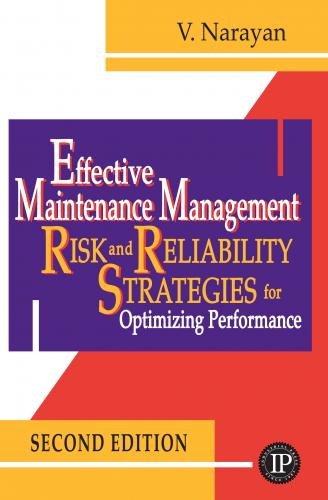4.5 CAPABILITY AND EXPECTATION
Every component, equipment, or system has an intrinsic design capability. The bold line in Figure 4.2 shows this graphically.
The demand or expected value may be below this level, shown by the dashed line in Figure 4.2. In this case there should be no problem meeting the demand. However the expectation may be higher than the design capability, as shown by the dotted line in Figure 4.3. In this case, we cannot achieve the expected values on a long-term basis. No amount of maintenance can increase the capability of the equipment to produce continuously above the intrinsic design levels.
Figure 4.2 Normal relationship of demand to capability.
Designers tend to build in some ‘fat,’ stating a level of capability lower than the real value. This is partly due to the use of standard components, some of which are stronger than required, and partly due to built-in safety factors. When we exploit this ‘fat,’ there is a temptation to think that we are able to exceed the design values continuously. The reality is that this capability was always there, but the designers informed us differently.
Figure 4.3 Demand exceeds capability.
Over time, the capability line will droop, due to fouling, wear, fatigue, or chemical attack. When this happens, some maintenance has to be done, to bring the capability up to the design level, as shown in Figure 4.4.
The demand profile may be flat, or as is more common, fluctuating, with peaks and troughs. We cannot meet the expected demand when the two lines intersect, so we need to do some maintenance at this time. Alternatively, we can do the maintenance in anticipation of this situation, as illustrated in Figure 4.5.
Figure 4.4 Maintenance to restore capability.
Figure 4.5 Effect of demand fluctuations on maintenance timing.
The capability line will also exhibit some roughness. Thus, there will be a spread or distribution of values in the case of both the capability line and the demand line. These can be shown as bands of values as shown in Figure 4.6 and its inset. Normally, with smooth demand and capability lines, there is a single point of failure, shown by point B in the inset. With both curves having a band of values, the earliest point of intersection is point A and the latest point C. There is, therefore, a range of points of functional failure. This leads to uncertainty in determining it and the lowest value will normally be chosen, so that we are on the ‘safe side.’
We mentioned incipiency briefly in section 4.1.5. Here we will examine the physical process in greater detail.
At the level of the smallest replaceable component, we will deal with items such as light bulbs, ball bearings, or structural welds. Failure initiation is usually by fatigue or deformation caused by thermal or mechanical stress, or by chemical attack.
Figure 4.6 Effect of fluctuations in demandand capability on the timing of maintenance.
The rate of progression of the failure mechanism is variable, in some cases rapid, in others quite slow. Let us examine one or two common situations where we can observe the progress of the failure.
The first example is of a road that has a small surface defect or unevenness caused by poor finishing. As vehicles pass over this unevenness, the tires enter the depression and then climb up to the original level. This causes an impact load on the road as well as on the vehicle suspension. The effect of this impact on the road is to damage it further, causing a deeper depression. The next truck gets a bigger bump, and causes even more damage to the road. If we do not carry out repairs, the depression eventually becomes a pothole, making it unsafe to drive on this section of the road. Figures 4.7, 4.8, and 4.9 illustrate the sequence of events.
Figure 4.7 How road surfaces get damaged.
Figure 4.8 Tires “drop” into defect and climb out.
The time when we notice the initial defect is the start of the incipient failure, denoted by point x at time ti in Figure 4.10. The droop of the curve shows the rate of growth of the pothole. At some point in time, this condition becomes unacceptable, as the road is no longer safe to use. The norm used to determine its acceptability is dependent on the operating context. The higher the speed of the vehicles and the greater their loading, the stricter are the acceptance standards. The dotted lines show the relative levels of acceptability, which are dependent on road speeds and loading. At the point of intersection with the curve, indicated by the point y at time tf, it is not safe to drive on the road any longer. In other words, it has failed. The time taken for the condition to deteriorate from x to y, that is, tf – ti, is the incipiency interval.
Figure 4.9 The ‘drop’ energydamages the road further.
Figure 4.10 Incipiency interval (tf – ti).
The second example is of a welded structure, such as a pressure vessel or steel frame of a building. When originally fabricated, some minor cracks would have remained in the welds. At the time of construction, these cracks either escaped detection or were not serious enough to trace and repair. After commissioning the structure,these welds experience loads, which can fluctuate in magnitude, direction, or both. When there are cracks in the welds, the effective cross-sectional area is smaller, resulting in higher stresses. At the tip of the crack (refer to Figure 4.11),
